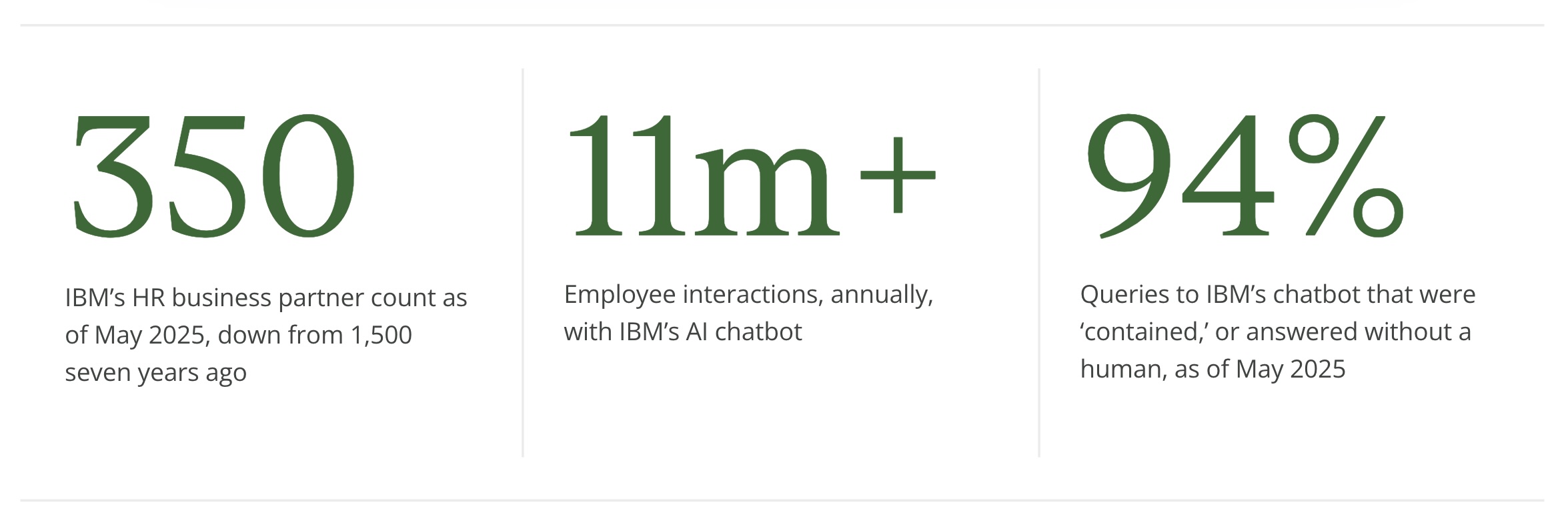Every company wants an internal talent mobility strategy that matches employees’ skills with new jobs, opportunities, and career paths. Few have one that really works.
That’s not the case with Schneider Electric. The global industrial technology leader started its Open Talent Market back in 2019 after business leaders said hiring externally was taking too much time and wasn’t always successful. Leaders also reported having trouble knowing which internal candidates would be a fit and wanted a more tech-driven approach as the company underwent a digital transformation. “We wanted to see what technology could bring to us in terms of speed, in terms of artificial intelligence,” says Charise Le, Schneider Electric’s global CHRO.
Within a month of the platform’s launch, the company saw 60% adoption rates, Le says. By 2023, she reported that 80% of employees engaged with the platform, an estimated 4,000 total job matches had happened, 8,000 “gig” or project matches had occurred, and 14,000 mentor matches had been made. Today, those numbers are even higher, with an 89% adoption rate, 13,400 gig matches, and 27,500 mentor matches made.
At a time when companies are increasingly turning to internal talent to fill roles as hiring slows—and implementing skills-based programs to drive greater mobility at a time of rapid change—Modern’s editorial director, Jena McGregor, spoke with Le about the success of her company’s strategy. Below are eight takeaways from the conversation about what worked and what she learned.
1. Co-designing with a tech partner enables flexibility and customization.
Schneider already had internal job boards and other traditional ways of sharing open positions but wanted to find something that helped match employees’ skills to available jobs. “It’s all about efficiency and how you do it with speed and at scale,” says Le.
After researching the market, they found Gloat, one of the earliest startups in the space, and signed on as their first customer. “We started with what the problem was we wanted to solve, and co-designing [with them] helped a lot,” says Le. “They were flexible. They could co-design with us. If you [go first] to a very mature product, you can’t customize.”
2. Look beyond job mobility. Platforms can drive project matches and mentor connections, too.
At first, Le says, Schneider was focused on internal job changes and mobility. Project opportunities were included but not a focus, and mentor matches were added in a second wave to connect mentors with potential mentees.
But while the numbers show matching skills to jobs was successful, Le and her team were surprised to learn that “at the end of the day what works the best is actually the projects and the mentor matches,” she says. People may have hesitated to list or show interest in jobs initially, particularly for senior positions. Yet “gig” and mentor matches took off.
"It’s all about efficiency and how you do it with speed and at scale," says Schneider Electric global CHRO Charise Le.
3. Don't deploy it just as a tool. The branding and user experience matter, too.
Le believes a big part of Schneider’s success was not rolling out the new platform as just another HR tech application. “We didn’t do it as just the implementation of a tool. We did it as a refresh of our mobility strategy,” she says. “We call it ‘Open Talent Market.’ The branding tells you something."
They also paid close attention to the user experience. “If you want people to use it, the experience matters a lot. As an employee and as a manager, it has to be very easy to be able to access, to view everything. … It has to be intuitive for people to use immediately.”

4. Make official changes to policies and processes that support the new strategy.
Schneider did this in three ways. First, before the launch of the new platform, employees had to stay put for three years before changing jobs, but they removed that policy. If you force people to stay in one role too long, Le says, “he or she will look externally anyway.”
Second, the company explicitly said people can spend up to 20% of their time on project work. While it’s not a perfect system, Le says, and time is not precisely tracked, the policy empowers employees to manage their own time. “It’s more of a principle, a guideline,” she says. “We said ‘we believe you will figure it out.’ ”
5. Be sure to equip your managers—and help shift their mindset.
Finally, and perhaps most importantly, Schneider removed the manager approval process for changing jobs, Le says. Initially, there was a lot of “pushback and unhappiness from managers saying, ‘how come my employee is exploring those opportunities and I didn’t know?’” she says. “My answer is: It’s your responsibility as a manager to create the safe place to have career discussions with your employees. It should not be a surprise.”
It’s essential to equip managers with training—and remind them that opportunities for employees to put their skills to work on new projects or in new roles helps them develop, benefiting the company. “It’s not like everyone gets it day one,” Le says. “You need to continue to train … but in the end the manager needs to really get it in terms of what their role is in supporting and enabling the development of their people.”
"It’s your responsibility as a manager to create the safe place to have career discussions with your employees," Le says. "It should not be a surprise."
6. Consider how company structure might influence adoption.
Schneider Electric has a different kind of operating model: Rather than being centered in one place, the executive leadership team has a “multi-hub” set of regional headquarters sites across different markets in Europe, China, North America, and India. That kind of distributed setup, says Le, helps employees see there isn’t a downside to relocating. “With this regional approach, the model itself helps to offer equal opportunity to everyone,” says Le, who as global CHRO, is based out of Hong Kong.
Le says the company balances local and international populations by making sure roughly 80% of employees in a region are local, retaining the knowledge and perspective of the local market. The remaining 20% are international, helping develop global talent.
7. The right timing can have a big impact, too.
After piloting the platform, the Covid-19 pandemic hit and the company quickly made the decision to take it global. “We wanted to see how we can we better leverage the skills, the people, and the resources we have everywhere when some part of the world might be overloaded,” she says.
She credits that timing for some of their success, but also thinks adoption took off because “we had a good story to tell people on why we deployed this. You need to make it relevant for people. At that moment [during covid, there] was a different mindset,” she says. “Word spread in the company. It’s not for HR to push.”
8. Adopt an 'HR-free' mindset and learn to let go.
Le may lead HR, but she knew her team had to step out of the way, too. “We debated it a lot, but at the end of the day we decided to not do too much putting in rules, processes, and policies. We adopted a mindset of ‘let the people to figure it out.’ We as HR are not in the process,” she says.
While many on her team were initially skeptical, “a belief I have is sometimes, as HR, we tend to be very nervous, thinking maybe things will get totally out of control.” But being “HR-free,” as she describes it, means HR doesn’t have to monitor every step. Stay hands off and let the manager-to-manager process work: “You need to let go.”
“Whenever you have something new, maybe 30% of the organization will figure out very quickly how to make it work,” Le says. “Other people watch and see. Some people will never get it, but that’s always the case. Instead of trying to make everything perfect—which we won’t—how about we let the organization figure it out? The outcome is in the numbers.”
.png)


